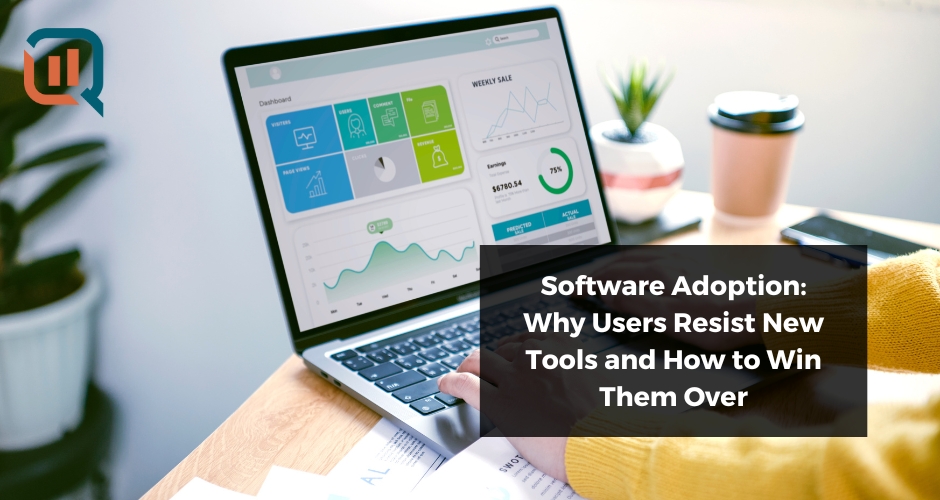My first ever job in college that didn’t involve stocking grocery shelves was at a small wall partition company in Minneapolis, where I worked as a temp. My original role was to mindlessly enter accounts receivable documents into the company’s accounting software, a task that allowed me to listen to countless podcasts. But halfway through the temp gig I was roped into helping out with the implementation of a new accounting system, Netsuite. I knew firsthand from my mindless document entering that the previous accounting system was pretty outdated. It was slow, crashed often, hard to understand, and worst of all, incredibly ugly, with a variety of gray and black boxes serving as its only submission to artistic design. Even so, a majority of the employees at this 15-person company acted like implementing a new software was the worst thing that had happened that year. They complained about how it was difficult to learn, how the necessary clicks to accomplish their tasks were way too confusing. Why did they have to learn a new system that they quickly decided was far worse than their current 20-year old dinosaur. One person in the company even considered early retirement to dodge the daunting learning curve.
I learned from that temp role that there is always going to be resistance to new software when it’s implemented to a group of users that aren’t familiar with it. People like routine, so learning a new system, then actually using that new system, disrupts the routines they build for themselves. It’s a phenomenon that I still see today when I implement QL2s various products for new customers. Because of the widespread opposition to software adoption, I want to share some solutions that will help companies secure user buy-in, which should lead to faster adoption and a higher return on investment.
There is an ironic relationship between leadership at companies that love to roll out new software that will solve existing problems or create new revenue opportunities, and the rank-and-file employees that look at each new tool that’s rolled out to them with deep suspicion. Even when the new product is supposed to make their jobs easier, or allow them to accomplish things faster than before, it’s usually not going to be incorporated into their day-to-day work immediately. So before the final signature is in place to buy a new software, it’s important to secure buy-in from the end users. Hold meetings or town halls to discuss the limitations of the current system, or the limitation of not having any solution in place. Discuss the vision your company has for the product and the potential ROI once everyone is using it. I’ve seen my customers have great success by using consistent email notifications through implementation which detail the power of the new solution to prepare the end users for adoption.
Once the product training has been completed, any bugs are ironed out and everyone has login information, that doesn’t mean the user adoption is completed. It’s hard to count the number of times I’ve implemented Opti Price, then followed up a month later to find that most users haven’t logged in since the training. It’s incredibly important for management and super users to follow up on usage. They should collect feedback on the tool and encourage consistent use. Sometimes it might even be necessary to mandate daily use until the user group has finally bought in.
Lastly, it is important to celebrate the success that end users have with a new solution. It can be incredibly satisfying when things finally start to “click” around how to use a new tool. By encouraging users to share their “wins” with the tool – stories of how they were able to get a task done in half the time, or identify a problem they would have missed without using the new solution, the whole team begins to appreciate it. With Opti Price implementations, I like to have users share stories of products they manage that have had increased sales due to a more competitive price position.
This practice will cascade from appreciation of the successes to a comfort and ease of use of the software. This is when adoption has fully taken place, and teams will consistently take advantage of their new capabilities. By celebrating successes, you can create a culture of positive reinforcement and encouragement around the use of new software. This will help to accelerate adoption and ensure that everyone is getting the most out of the new investment.
The vision and goals that a company has when signing on for a new software can only be achieved if the necessary people are actually using it, whether that be an accounting system to manage invoices or a competitive intelligence platform that allows users to set informed price points. By making an effort to secure pre-purchase buy-in, following through on adoption and celebrating successes, companies are much more likely to create an environment where the leadership vision matches employee execution.

Helping product/merchandising teams identify pricing gaps to maximize sales and profitability.

